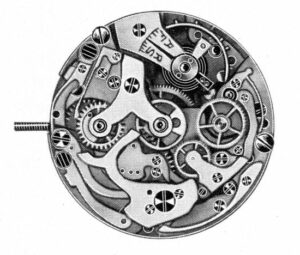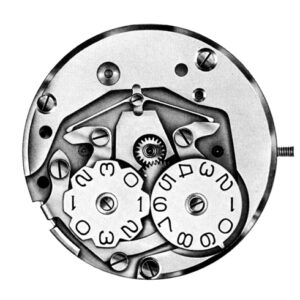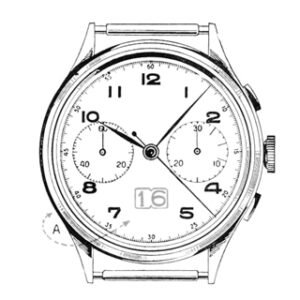 |
Brand: | Vénus | 






|
|---|---|---|---|
| Family: | |||
| Height: | 7.3 mm | ||
| Jewels: | 17 | ||
| Reserve: | 44 hours | ||
| Frequency: | 18,000 A/h | ||
| Winding: | Hand winding | ||
| Diameter: | 28.0 mm (12.5 ligne) | ||
| Complications: | 2-Button, Big Date, Cam Switching Chronograph, Chronograph, Date, Double Wheel Big Date, Quick Date Correction | ||
| Hands: | 30 Minute Chronograph Hand at 3:00, Big Date at 6:00, Central 60 Second Chronograph Hand, Central Hour Hand, Central Minute Hand, Small Seconds Hand at 9:00 | ||
| Distinguishing Technical Characteristics | |||||||||||
|---|---|---|---|---|---|---|---|---|---|---|---|
 Hand-Winding  Clockwise Balance Cock |
|||||||||||
| Production: 1953 – 1963 | |||||||||||
| 1910s | 1920s | 1930s | 1940s | 1950s | 1960s | 1970s | 1980s | 1990s | 2000s | 2010s | 2020s |
The Venus Cal. 211 is a cam-switching chronograph movement with a big date complication. It is closely related to the Venus Cal. 210 and to Venus revolutionary Cal. 188.
Cal. 211 was introduced in 1953 and retired around 1963, making it one of the first “big date” movements after the unusual Angelus 255. The fact that it was also a chronograph, with a harmonious dial arrangement, is especially notable.


The most unusual feature of Cal. 211 is the dual wheel “big date” shown at 6:00 on the dial. An early example of this complication, it counts to 39 days rather than 31, requiring correction at the end of every month using the inset pusher at 8:00. This two-disc arrangement is quite different from the concentric discs used by Angelus or the overlapping discs seen on many other “big date” movements, and is reminiscent of the 1990s era A. Lange & Söhne complication.
Images are taken from official publications and are used here for commentary and educational purposes. Copyright is held by the original owner as noted.